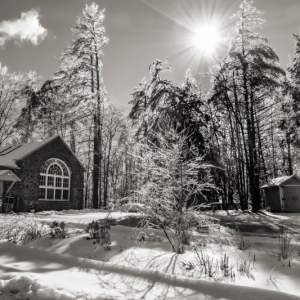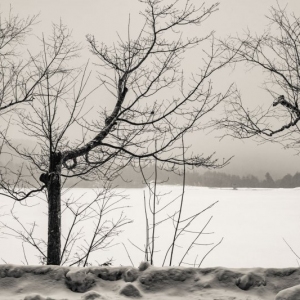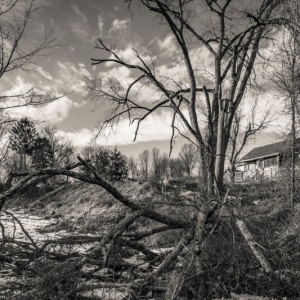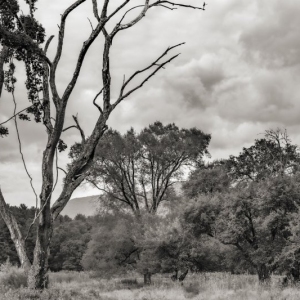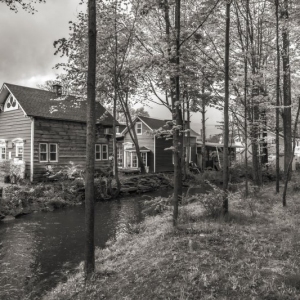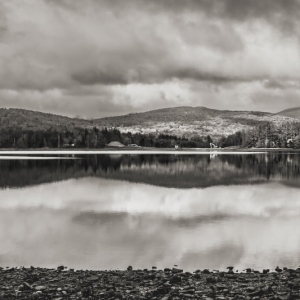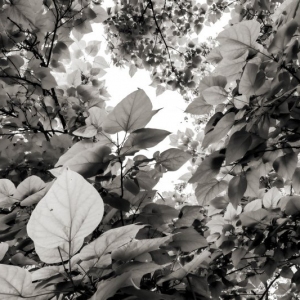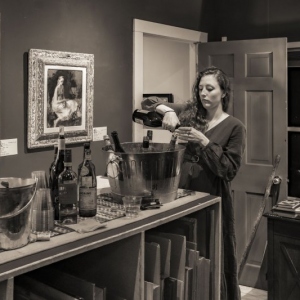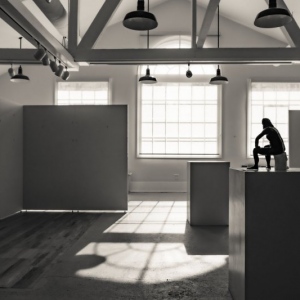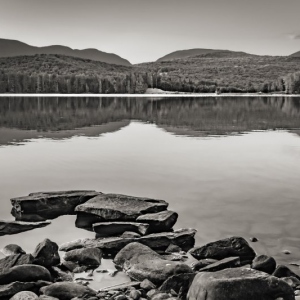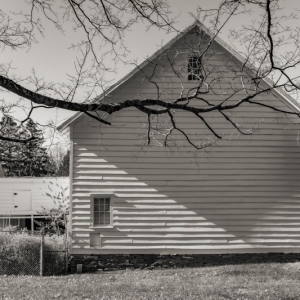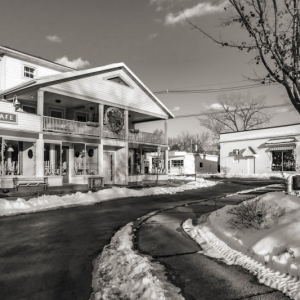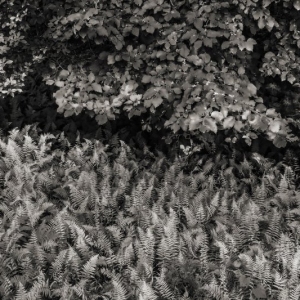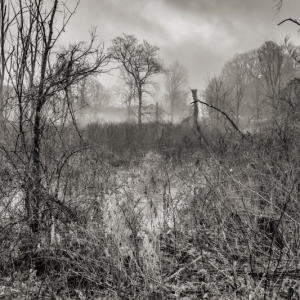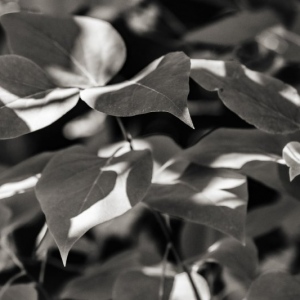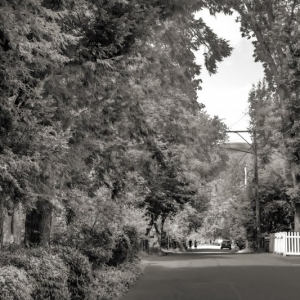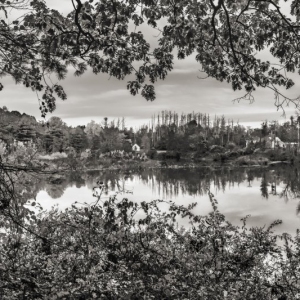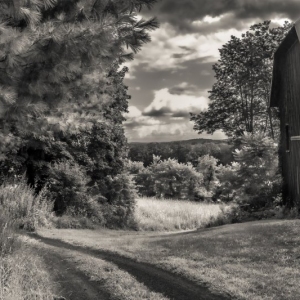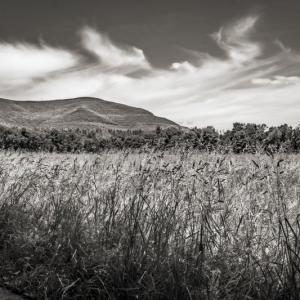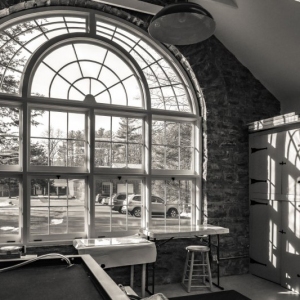March 18 – April 15, 2022
A group of more than 30 recent photographs of the town of Woodstock and its surroundings by John Kleinhans will be featured at the James Cox Gallery, 4666 Route 212, Willow, NY, in a month-long exhibit entitled Just Looking. The exhibit opens with a reception Friday, March 18th, from 5p.m. to 8 p.m.
A long- time resident of the art colony and active member of Woodstock’s cultural community, Kleinhans is noted for his powerful images of emblematic local scenes like the Ashokan Reservoir and Cooper Lake, as well as more intimate views of the village itself.
Before devoting himself to professional photography, Kleinhans, a native of Pittsburgh, led a life full of diversity, embracing many pursuits, including music and psychology. He graduated with a bachelor’s degree in music from New York University in 1962 and earned a PhD. in Experimental Psychology from Rutgers University in 1970. Outside of university life, Kleinhans produced music programs for avant-garde New York radio station WBAI. It was during this time that Kleinhans became interested in photography, enrolling in an adult education class at the New School taught by prominent experimental photographer Josef Breitenbach,.
While at NYU, Kleinhans met his first wife, Elysabeth Korein. The young couple (each 19 years old) traveled extensively throughout Europe in the early years of their marriage. Eighteen years later, on a solo trip through the French countryside, Kleinhans created a stunning group of color photographs that resulted in an exhibit entitled Douce France (Sweet France) which opened in 1980 at New York’s Alliance Francaise and traveled throughout the US, Canada and France.
During these early years, Kleinhans taught Psychology at several distinguished colleges and universities, including Rutgers, Manhattanville and the University of Connecticut. In the meantime he continued to pursue his interest in photography, setting up a darkroom in the closet of his New York apartment where he processed all of his own negatives, color as well as black and white. In 1979 Kleinhans retired from teaching.
In 1982 Kleinhans moved to Woodstock where he enrolled in painting and drawing classes with Robert Angeloch, founder and president of the Woodstock School of Art. It was here that met his future wife artist Paula Nelson, vice president of the school. This marked a pivotal point in Kleinhans’s artistic career. He and Nelson became active in almost every aspect of Woodstock’s thriving cultural scene, serving on the Boards of Directors of the Woodstock School of Art, Woodstock Artists Association and the Center for Photography.
While immersing himself in Woodstock’s art scene, Kleinhans took a position as product designer for Woodstock Percussion. Over a span of 20 years, Kleinhans refined his machine shop skills, developing prototypes and producing promotional material for the famous wind chime manufacturer. In the meantime, he also worked as a contributing photographer for the Woodstock Times.
In the 1990’s Kleinhans and Nelson launched a book publishing company, Precipice Publications. Among the titles they have produced is a volume of large-format platinum contact prints by Kleinhans of Monhegan Island, a popular destination for artists, including the couple and their Woodstock friends.
Kleinhans’s photographs have been exhibited widely throughout the region and have earned several prestigious awards including the Jacobs-Towbin and Sidney Laufman Awards from the Woodstock Artists Association.
In 2007 a permanent installation of over 50 of Kleinhans’s large photographs entitled A Year in Central Park was mounted in the lobby and throughout the building at 240 Central Park South in New York City. The photographer devoted over two years to completing this project.
Kleinhans now works exclusively in a digital format, relying primarily on Fuji all digital cameras. In comparing digital processing to dark room work, Kleinhans cites the advantage of more flexibility using modern technology, recalling that before the digital age, photographers had to make numerous prints on paper to finally achieve the results they wanted. The problem with new techniques, he pointed out, is the risk of “going too far” and over-enhancing or manipulating the image. “The results can be jarring”, he added.
In addressing his passion for photography, Kleinhans refers to the influence Ansel Adams, the great 20th century landscape photographer, has had on his work, noting, “To Adams the negative was like a musical score; the print itself the performance.” Kleinhans shoots and processes photographs almost every day, sometimes grabbing his camera when an intriguing subject catches his eye, at other times returning to favorite spots like the Thorn Preserve or the Ashokan Reservoir. The most recent piece in the upcoming exhibit at the James Cox Gallery is of the Woodstock School of Art. Taken just after the recent ice storm, the school’s iconic architecture is framed in a cascade of glittering branches…an example of the photographer’s remarkable ability to capture, then enhance, existing light conditions. It is “seeing” that informs Kleinhans’s approach, rather than making a statement. Just Looking, it seems, is an appropriate title for this exhibit, Cox pointed out.
In a highly unusual decision, the gallerist and the artist agreed that work in the exhibit should be displayed without glass. “This creates a more immediate effect,” Kleinhans explained, “giving the viewer the ability be more engaged with the finely tuned surface of each photograph.”
Just Looking will be on display through April 15th.
